In software development when we talk about the word “agile”, we usually refer to more flexibility, more collaboration, and probably more simplicity. Agile development is conventional nowadays and software developers are rapidly moving from Waterfall to Agile development. Agile methods focus on delivering executable code quickly by increasing responsiveness while decreasing development overhead and consider people as the strongest pillar of software development. As agile development dominates Waterfall methodologies for software development, it comes up with some distinct challenges related to the testing of such software.
Let’s discuss the challenges with possible solutions and approaches used for resolving these challenges. Following are the challenges that might occur during testing and proposed solutions in practical scenarios.
Challenges and Solutions
Test Documentation
In agile, the requirements of the customer are continuously changing and we are more focused on delivering the product rather than focusing on the documentation. Rapid programming is used for this purpose. Among all this, to keep hold of the testing documents, test data, test cases, and scenarios, is a challenge.
As a solution, we can implement checklists and exploratory testing to overcome documentation problems. checklists make it simple by describing in 1-2 lines what should be tested. Make a checklist per area to be tested and the final checklist will look like a group of one-liner. In addition, we can also create a supplementary checklist for the overall system having general test scenarios.
Insufficient Testing Coverage
Due to these continuous changes in requirements and code, maintaining test coverage is difficult. Major changes in code make it difficult for the coverage to be maintained. Following techniques can be used to overcome this problem.
- Implement “just-enough” acceptance tests. This technique boosts the confidence of everyone
involved in the project by showing that all sections are complete and functional at the end of each
sprint. - Fully automate the acceptance tests as possible. This technique overcomes ever-growing manual
regression testing and we get more coverage. - Run all acceptance tests in the regression test suite. This approach provides rapid feedback to theteam.
Broken code after frequent builds
Due to frequent change and daily compilation, there is a chance that code break occurs. This code break requires testing at each build which is obviously very difficult as the resources are not sufficient every time. Resources are always constrained.
As a solution, automatic testing tools can be used to perform regression testing whenever a new product is being developed. There are lots of tools available for continuous integration such as Cruise Control, Hudson, and SmartBear’s Automated Build Studio. The use of such tools will ensure and detect the constancy and integrity of the product through automated tests.
Early defect detection
Due to frequent change in requirements, defect detection in early phases is majorly an issue which is hard to deal with. Defect detection in early phases is consequently less damaging and costly rather than detection during production. This would lead to high cost and moreover all damages.
There are two ways to accomplish early defect detection. One is by Implementing peer reviews and the other is the use of static analysis tools to generate reports of program structure and defects as early as possible.
Lacking focused testing
There is no proper separate phase of testing in agile methodology. The center of focus is rapid development where the developers rapidly develop the product and the requirements are constantly changing in order to fulfill the customer’s needs. In all of this process, there is a lack of focused testing. No specific phase is given to perform testing activities which creates
problems for doing testing. focused testing can be achieved by using automated testing tools and multiple builds using those tools.
Few software tools that can be used
As mentioned above there are many tools that can solve the problems occurring in agile development methodology. Following are few test automation tools that can serve the purpose.
N-Unit is a special testing framework that only supports .NET framework for testing purposes. Initially, N-Unit was a console-based runner but with the advancement to version 3.0 it provided a GUI to its user. N-Unit initially supported only unit testing but aimed to do the integration and acceptance testing as well. With version 3.0 it removes this limitation and also supports integration and acceptance testing along with the unit testing.

SmartBear is the latest testing tool that provides help in automating certain QA activities. It provides an easy testing environment and has many features like central test case management which is responsible for providing the supervision of test schedules, create, manage and record defects, trace test to user stories and generate reports of test execution. It can also give full visibility into the testing process and helps in the assurance of software. This tool saves time and increases productivity.
Cucumber is a software testing tool that works to enhance software testing automation. The focus of cucumber is on its customers. It helps the customers in testing the documents. Testing requirements are even easier now. Moreover, cucumber supports behavior-driven development. The focus of cucumber is on acceptance testing. It is a very powerful tool that can help in solving the challenges of testing in agile.

Robot framework is another tool for software testing automation that supports acceptance testing and acceptance test-driven development. The test data provided in a tabular form which makes it easy to use. We can enhance its capabilities by adding certain libraries which are implemented in python and java. Robot Framework is introduced on GitHub where further documentation and source code is available. Robot Framework is independent of the operating system. The framework is implemented on python and runs on JVM and .NET. It was released under Apache License 2.0 and it is open-source software.
Author: Malmi Samaranayaka is an ISTQB – Advanced Level [CTAL] certified Senior QA Engineer at CMS.


